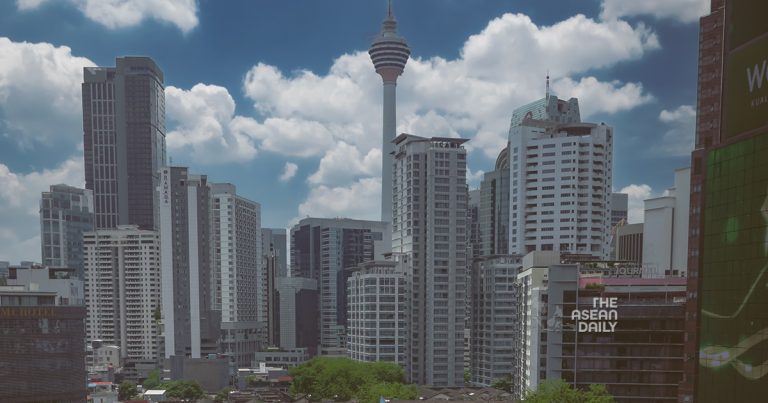23-12-2023 (KUALA LUMPUR) Malaysia’s decision to ease certain requirements for its retirement residency programme known as the Malaysia My Second Home (MM2H) visa has generated significant interest. However, many interested applicants remain hesitant to formally apply due to missing details in the revised guidelines. While the new criteria lower barriers and broaden eligibility, uncertainties remain around key conditions like minimum income that could determine whether middle-income professionals now find the programme attainable. Overall the changes are a step in the right direction, but to fully realise their benefits, the Malaysian government must provide complete transparency.
When Tourism Minister Tiong King Sing announced revisions to the MM2H programme in mid-December, he reignited long-held hopes that Malaysia could attract more foreign retirees and moderate means families to experience life in the country. For years the programme proved inaccessible to many due to restrictions setting the financial bar too high. The previous monthly offshore income requirement of RM40,000 (US$9,600) and fixed deposit of RM1 million essentially limited the scheme to only the ultra-wealthy. This did little to encourage meaningful population inflows or economic stimulus.
By introducing a three-tier structure and lowering entry points, the Malaysian government showed welcome recognition that a broader target audience exists. Reducing the minimum fixed deposit to RM500,000 for the baseline ‘Silver’ category makes the programme attainable for average wage earners finally saving for retirement. However, Minister Tiong’s announcement curiously omitted any mention of new income criteria. Without knowing if requirements were relaxed from the former stringent level, interested applicants like British expatriate Rebecca Spencer have no choice but to remain waiting on the sidelines. As retirees mostly relying on investment dividends, the previous monthly minimum would have automatically disqualified their application. Many others now keeping an eager eye on Malaysia share this dilemma of an incomplete policy revelation stalling their plans.
Property consultants and licensed MM2H agents have also voiced frustration regarding the missing gaps. Not understanding changes to key criteria like income prevents managing expectations or advising those flocking with inquiries. Leading agencies warn of continued stagnation in applications processed without a full clarification. At Alter Domus, Managing Director Ch’ng Toh Gee predicts handling over 50 approvals monthly once all conditions are known – a vast improvement over just two under past restrictions. The new system appears more open and accommodating in principle, but incomplete communication is paradoxically undermining its potential success in drawing in greater foreign participation and investment.
Singaporean homeowners with Malaysian properties now eye the revised MM2H scheme as a solution to issues raised during travel disruptions of the pandemic era. Roadblocks preventing longer-term access to owned homes under short-term visit passes drove interest for those like businesswoman Mdm Dyana to seek a long-stay visa. Still, without disclosed changes to income and assets requirements, the prior stipulations would continue rendering the programme out of reach. As a regional financial hub and source of foreign demand, full clarity on Singaporean applicants’ eligibility seems especially important for Malaysia to court. The coastal Johor state neighbouring Singapore stands to benefit immensely from greater residential integration should the conditions align appropriately.
Encouragingly, early impressions suggest the new tiered system is attracting a broader applicant profile beyond just the super-wealthy. Consultants cite growing curiosity from middle-income professionals and expatriate families seeking an affordable retirement lifestyle. By splitting the MM2H into graded categories, Malaysia demonstrates an evolved understanding that higher earners and those of more modest means each contribute value as residents. The reduced RM500,000 deposit alone opens participation to senior managers, small business owners and skilled technical workers from nations like the UK, US, China and South Korea. As long as uncertainties over minimum income do not eliminate these demographic groups, the changes could pump new life into the real estate market and the larger economy through residential and spending multipliers over the long run.
Yet questions have accompanied the potential broadening of eligibility. Opposition parliamentarians fear a looser path to permanent residency under the top-tier category may lead to unscreened influxes and questions of “national identity”. However, the immigration vetting process will presumably remain as stringent, and permanent residents cannot influence elections or citizenship. Overall, a measured approach to attracting modest investment and skills seems preferable to continued isolation if Malaysia hopes to stay regionally competitive. Tightening requirements too abruptly also risks undoing regained momentum and trust just reestablished with participants.
Moving forward, complete transparency on all revised MM2H conditions is the surest way to ease valid concerns while enabling the programme’s success. With global demand high for affordable retirement destinations post-pandemic, Malaysia stands well-positioned if it delivers an open and coherent long-term residency framework. To uphold their progress thus far on this file, the Malaysian government need only fill in the remaining gaps to let the opportunities of a reborn MM2H programme truly unfold.




